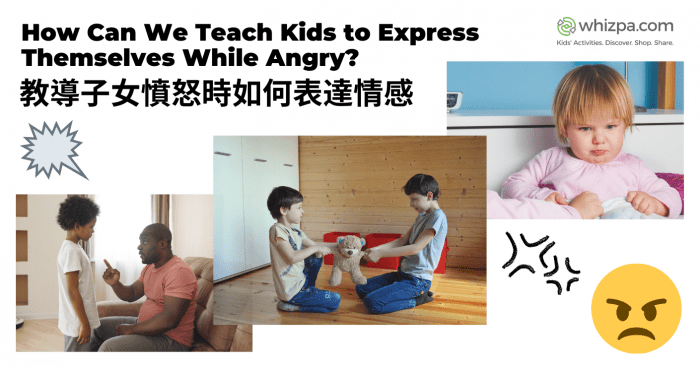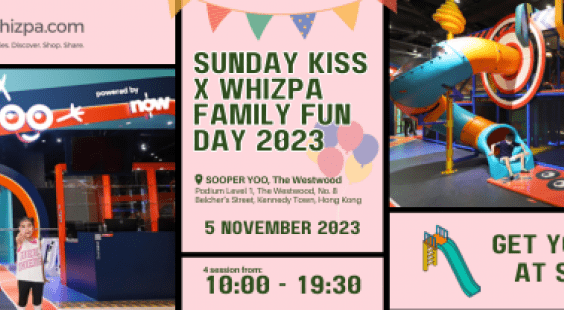
How Can We Teach Kids to Express Themselves While Angry?
Just like adults, kids get angry. But, unlike grown-ups, they don’t have the experience or the self-control to know how to deal with it.
Experts warn against telling your kids that it is wrong to be angry or sad. This only results in repressed feelings. Unexpressed anger can turn inward and result in mental or physical disorders such as depression, anxiety, sleeplessness, or digestive issues. And those are certainly much bigger issues to deal with.
So, when your kid is angry and all you hear is screaming, yelling, and name-calling, what should you do to control the situation? How can you teach your kids to express their anger in a safe manner? We have listed down for you a few ways through which you can inculcate healthy anger management habits in children:
1. Practice What We Preach
It is often said that kids will do less of what parents ‘tell’ them to do, but more of what they see parents actually ‘do’. When we are angry at someone or something and if we know how to take time out, ask assertively yet politely for what we want, or find an appropriate safe outlet for our physical energy, we will find that our kids will soon follow suit. Let’s take an example - You just received a phone call from your office and you’ve been asked to come in and work on a Saturday. You’ve had a hectic week and already have personal plans for Saturday. You are furious and you see that your child is standing next to you. It’s time to muster your strength and use it as an instant anger-control lesson for your child. You can say to your child, “I am so angry right now as I have to postpone tending to my personal chores on Saturday.” Then offer a calm-down solution. “I am going to take a quick walk so I can get back in control.” Surely, the next time your kid loses his temper, he is bound to copy this ‘calm-yourself-down technique’ that he’s learned from you.
2. Devise an Anger-Replacer Mechanism
There are plenty of ways to help kids calm down when they first begin to get angry. Since kids don’t know what to do when they are angry, they tend to repeat the same patterns of learned behavior. It could be loud wailing, or kicking or screaming. It is a good idea to talk with your child about some acceptable anger–replacer behaviors. You can turn it into a big checklist or draw on a poster, whatever way you think works best for your family. It’s more fruitful if the list is prepared in consultation with them. Here are a few ideas from middle-schoolers:
-
Walk away from the argument,
-
Think of a peaceful place I visited in the past
-
Hit a pillow hard
-
Squeeze a stress ball
-
Knock a tennis ball on the wall several times
-
Rip up a newspaper
-
Draw a picture to convey how I am feeling
-
Count backwards from 100 to 1
-
Talk to someone I trust
-
Do an angry dance to high-energy music
-
Loudly sing a song that makes me feel in control
-
Bang hard on my drums
-
Pen down all the angry thoughts on a piece of paper and then fiercely rip it into tiny pieces.
Once the child chooses his or her “calm down strategy”, encourage them to follow the same technique each time they feel triggered.
3. Teach them The Power of Deep Breathing
The technique of deep breathing should be taught to children when they are at peace and ready to absorb it well. When someone is angry, the body gets overwhelmed and can go onto fight, flight, or freeze mode. By taking deep breaths, you can train your body to go back to rest and digest mode. Teach your child to expand her belly while she breathes in and contract it when she breathes out. Ask kids to do this at least 20 times or until they feel back in control.
4. Use Sensory Calming Techniques
For younger kids, you can train them to look for a particular object and hold on to it when they are angry. Some kids can be comforted by a blanket, a special soft toy, or even a parent’s personal belonging such as a scarf /handkerchief.
5. Help Kids Put a Name to their Feelings
When kids are angry, there are usually other feelings they are feeling underneath the garb of anger. As per Paul Ekman’s research, it is called the Anger Iceberg. Ekman suggests that there are times when an underlying emotion, such as disgust, fear, trauma, etc. emerges to the surface in the form of anger and we do so to protect our raw feelings. For example, underneath a pre-teen boy’s anger can be disappointment that the basketball-coach did not include him in the final match and he starts to feel that he is not good enough. Anger can be formed by that disappointment with himself and he might even use anger to protect himself from the shame of being rejected. Learning to recognize the underlying feelings can be increasingly powerful as it can lead to healing conversations between a parent and a child.
Below, you can see the Anger Iceberg, which shows what other emotions lurk below the surface. Sometimes, it is embarrassment, loneliness, depression, or fear. It can also be a combination of several feelings. As parents, educators and caregivers, we should try to ascertain what exactly our kids are feeling which they might be masking behind their anger. Encourage your child to say what they truly feel - “I am angry because I feel hurt by someone’s behavior”, “I am angry because I am exhausted from doing too many lessons”, “I am angry because I am embarrassed to wear these clothes.”
6. Read Anger Management Books Together
It is a wise idea to read anger management books along with your little ones to illustrate how anger is just an emotion that can be dealt with in a safe manner using different techniques. Here are some good picks:
-
Cool Down and Work Through Anger by Cheri J. Meiners – This is an informative book about how anger affects your body and suggests some safe ways to express your anger and work through it to be able to return to a peaceful state of mind.
-
Angry Octopus by Lori Lite and Max Stauyk- Kids can easily relate to the angry octopus in this story as a wise sea child shows him how to calm down and manage his anger in a quick and easy manner.
-
The Secret to Clara’s Calm by Tamara Levitt- This is an excellent storybook for parents, educators and young readers. Beautifully illustrates how meditation supports self-regulation and improves friendships.
7. Hold Them Tight
Some parents also advise holding your children firmly in your arms to make them feel safe when they are angry. But if the child is quite violent, they may not like this strategy and it can be harmful for you too.
There is no denying that we have to deal with angry children across all age-groups, be it when they are toddlers or when they grow up to be teenagers. But like any other emotion, we just need to manage this emotion in our kids. We have to pave the way to help our kids learn the right methodologies to express anger in a safe and healthy manner. The objective is to help them bring their bodies back to rest and digest mode to prevent them from making bad choices when they are angry or out of control.
How do you train your kids to manage their anger effectively? We’d love to hear from you.








